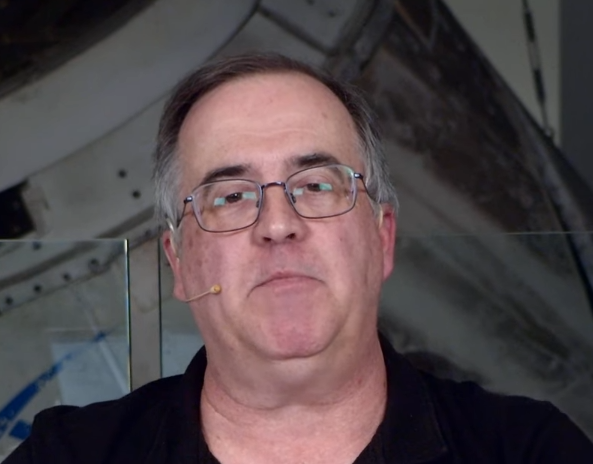- cross-posted to:
- science_memes@mander.xyz
- cross-posted to:
- science_memes@mander.xyz
cross-posted from: https://mander.xyz/post/18022653
Launches
I understand but some people are worth the propellant
but if you do an eve-kerbin-jool gravity assist…
Just get them to low orbit, let reentry take care of the problem.
Just strap em to the angry side of the rocket on earth and let the exhaust deal with em
yeah this thing thats become popular is so annoying because it assume some straight arrow shot into the sun when you just want to send the item into an unstable orbit. The suns gravity well is all you need to get it into.
Even without actively accelerating toward the sun, something starting on earth is already orbiting the sun at about 100,000 km/h. You’d have to cancel that out by accelerating the same amount in the opposite direction just to be able to fall into the sun’s gravity well instead of continuing to orbit. That would take quite a bit of propellant.
why would you be fighting our velocity. you just need to nudge away in the direction it can still be moving with our velocity. that is what an orbit is. again it does not need to be an arrow blasting in a straight line at the sun it just needs to have an orbit that is falling into it.
But even though the Sun has such a powerful pull, it’s surprisingly hard to actually go to the Sun: It takes 55 times more energy to go to the Sun than it does to go to Mars.
Why is it so difficult? The answer lies in the same fact that keeps Earth from plunging into the Sun: Our planet is traveling very fast — about 67,000 miles per hour — almost entirely sideways relative to the Sun. The only way to get to the Sun is to cancel that sideways motion.
yes the problem here is its assuming in short order. alls you need is a decaying orbit. but it won’t go into the sun for hundreds, thousands, etc years. Again these stupid arguments are about shooting like a bow or gun or cannon right into the sun. thats is why what you have ends with “almost entirely sideways relative to the Sun. The only way to get to the Sun is to cancel that sideways motion.” You don’t need to cancel the sideways motion at all. You just need to have the slighest motion toward the sun along with our orbital velocity which is being kept from being pulled awa by the suns gravity. so our sideways moting is currently to small to escape it but that is for our mass. The energy needed is more related to the small size of the object and the relative lesser gravity effect on it from the sun. We put sattelites in orbit around the sun and it would take much less than that as we don’t care about a stable orbit or getting to the sun quickly at all.
The reason I can keep producing articles that agree with me, but you can’t, is that I am correct.
Conservation of momentum is a fundamental law of the universe. The earth and every object on it have a large momentum with velocity perpendicular to the axis between the earth and the sun. That momentum can’t just disappear. For an object moving in a stable orbit to transition into a collision course, the momentum carrying it sideways, away from collision, must be counteracted, or else it will continue to do what it was already doing: orbiting instead of colliding. It’s Newton’s first law.
It has nothing to do with how fast you get to the sun. It’s about getting to the sun at all. Whether in 1 year or 100,000. Say you give an object the small nudge you keep talking about. Cancel just a little of the sideways velocity, and the object will veer a little bit toward the sun… then pass it at a slightly smaller distance than the original orbit. You’ve turned an essentially circular orbit into a more elliptical orbit. Still not a collision course. Comets can have hugely elliptical orbits, but still without ever colliding with the sun. Cancel more of the sideways motion, and the orbit becomes even more elliptical. It passes closer to the sun at perigee, and farther at apogee, but still doesn’t hit it. The only way it hits is if you cancel so much of the sideways motion that the orbit becomes so elliptical that the distance at perigee is smaller than the radius of the sun. Then the orbit intersects the sun’s surface, and a collision occurs. Which is exactly what I’ve been describing.
You keep talking about putting it into an “unstable orbit.” Fine, such things exist, but the energy to destabilize them still doesn’t come from nowhere. Satellites orbiting the earth can become unstable and fall in due to dragging against the atmosphere. The friction converts the orbital velocity to heat, so you don’t need to use propellant to achieve it, but conservation laws still apply, so the orbital velocity still needs to be lowered by some force for the orbit to change. We are too far from the sun to drag against its atmosphere significantly. Maybe enough to hit the sun in billions of years, if you really don’t mind waiting.
Or, in a system of multiple orbiting objects, like a solar system, you can cancel out some of your orbital velocity and hit the sun by using the gravity of one of the other planets as a brake, robbing the planet of a tiny bit of its momentum to stop your own, satisfying the conservation law. That can also achieve the kind of orbit you want. The solution doesn’t absolutely have to be propellant, but it absolutely cannot rely on free energy, and it can’t be expected to happen by accident. You would still need to carefully arrange your slingshot maneuver with the other planets to cancel your orbital velocity out nearly perfectly, if you wanted your orbit to intersect the surface of the sun, or else you would only ever succeed in merely changing the shape of your ellipse.
So your saying a stable orbit is easier to achieve than an unstable one? I mean why does nasa higher those math guys. You think putting the helios in a stable solar orbit was more achievable than having them screw up and fall into the sun (again eventually). I see the articles but the supossitions on them are my issue. They seem to be taking an idea of shooting something directly into the sun and not so much allowing something to fall into the sun over a large period of time.
You don’t need to cancel the sideways motion at all. You just need to have the slighest motion toward the sun along with our orbital velocity which is being kept from being pulled awa by the suns gravity.
If you have the slightest motion towards the sun along with our orbital velocity, you will move closer to the Sun for one quarter of an orbit, before you start rising again. After half an orbit, you’ll be higher than you were before. The difficulty in impacting the sun has little to do with the earth being here—even it it disappeared, the cost of getting to the sun would be basically the same
we don’t care about a stable orbit or getting to the sun quickly at all.
The stability of the orbit is largely irrelevant. Anything near 1 AU is not likely to decay to the point where it impacts the Sun before the sun becomes a red giant and expands past the Earth’s orbit. At that point, you can just leave your enemies on Earth and be assured that they will eventually fall into the sun in around 5 billion years
true enough. while going through this back and forth I found they even contemplated doing a jupiter flyby for getting the sattelites in place but again they did do it and they did not want them to crash into the sun but they did go down in a little over ten years.
Edit: replaced a bad explanation with a very good explanation: Hitting the Sun is HARD
Related, The Most Confusing Things About Spacecraft Orbits is maybe the best primer for basic orbital mechanics for people who haven’t played KSP
Very counter intuitive IMO. I never knew that!
But I don’t want them to just float out there, I want them to burn
Giving your enemies a decade worth of food and water to ensure they survive a dozen Venus flybies to drop their orbit into the sun
Actually, can I be your enemy? That sounds like the coolest way to die





